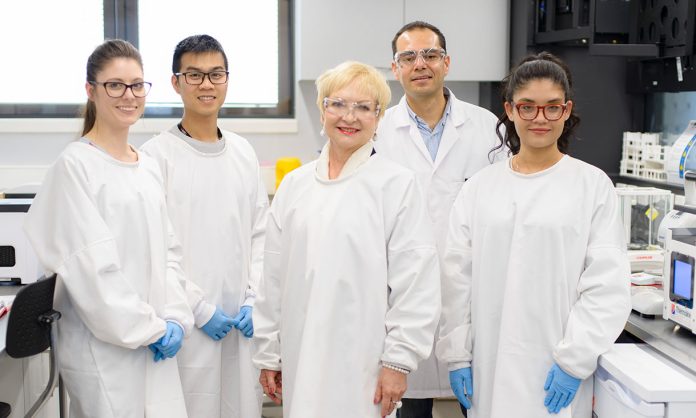
An Australian-Japanese team of scientists have developed a natural antibacterial texture for use on food packaging to improve shelf life and reduce waste.
Inspired by the bacteria-killing wings of insects like cicadas, the mixed science team developed a lab-made nanotexture that kills up to 70% of bacteria and retains its effectiveness when transferred to plastic.
Distinguished Professor Elena Ivanova of RMIT University, said the research sets the scene for significantly reducing waste, particularly in meat and dairy exports, as well as extending the shelf life and improving the quality, safety, and integrity of packaged food on an industrial scale.
“Eliminating bacterial contamination is a huge step in extending the shelf life of food,” she said.
“We knew the wings of cicadas and dragonflies were highly-efficient bacteria killers and could help inspire a solution, but replicating nature is always a challenge.
“We have now created a nanotexturing that mimics the bacteria-destroying effect of insect wings and retains its antibacterial power when printed on plastic.
“This is a big step towards a natural, non-chemical, antibacterial packaging solution for the food and manufacturing industry.”
Ivanova’s team created its nanotexture by replicating insect nanopillars and creating their own nanopatterns.
Bacteria cells were observed at RMIT’s world-class Microscopy and Microanalysis Facility to analyze the pattern’s antibacterial potential.
The most effective antibacterial patterns were shared with the Japan team, who devised a method of reproducing the patterns on plastic polymer.
Ivanova’s team evaluated the plastic nanopatterns back in Australia and identified the one that best replicated insect wings while also being the easiest to fabricate and scale up.
Ivanova said dealing with plastic was “more difficult than other materials like silicon and metals, because of its flexibility”.
“The nanotexturing created in this study holds its own when used in rigid plastic. Our next challenge is adapting it for use on softer plastics,” she concluded.
RMIT, Tokyo Metropolitan University, and Mitsubishi Chemical’s The KAITEKI Institute are collaborating on the study, which was published in ACS Applied Nano Materials.




















